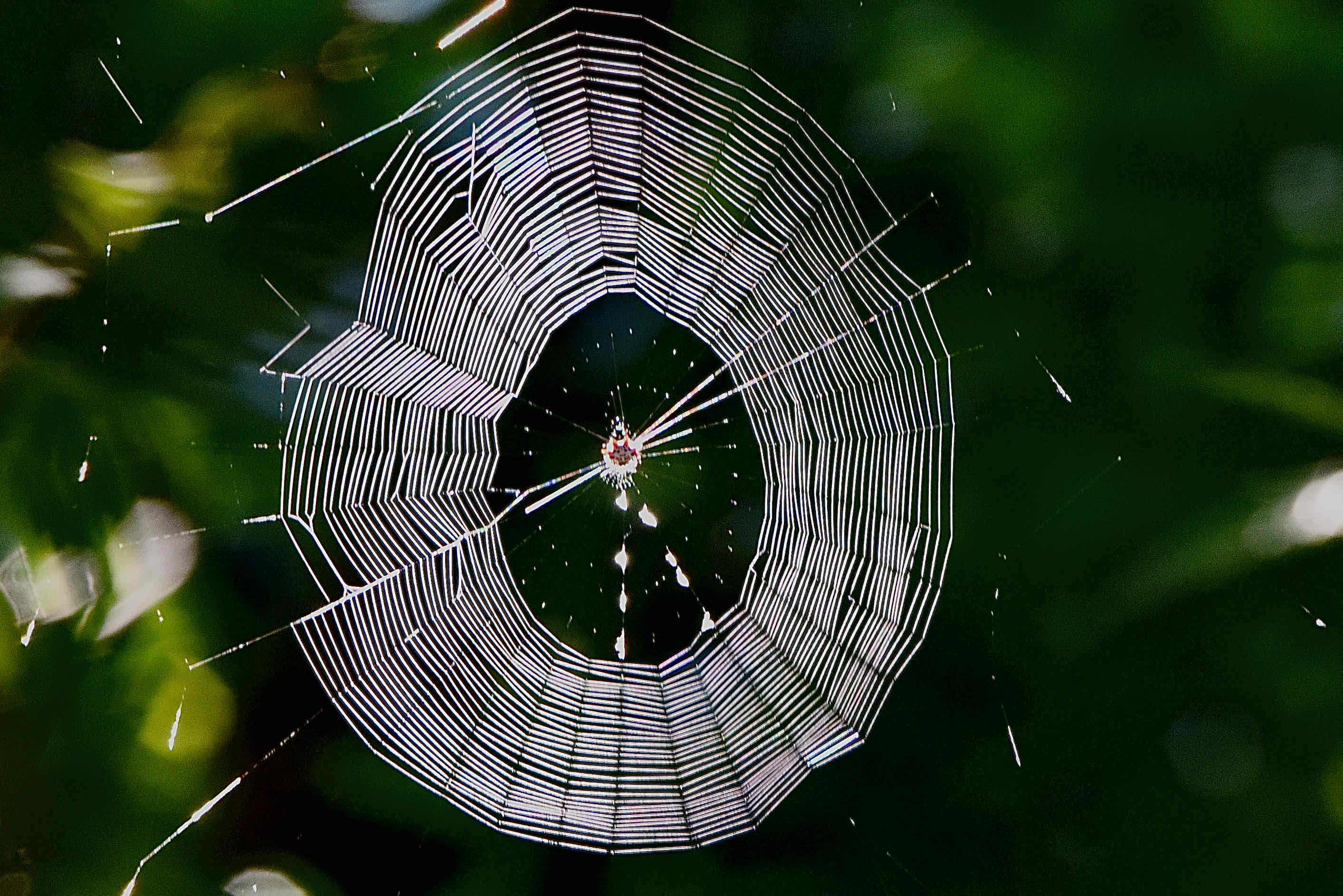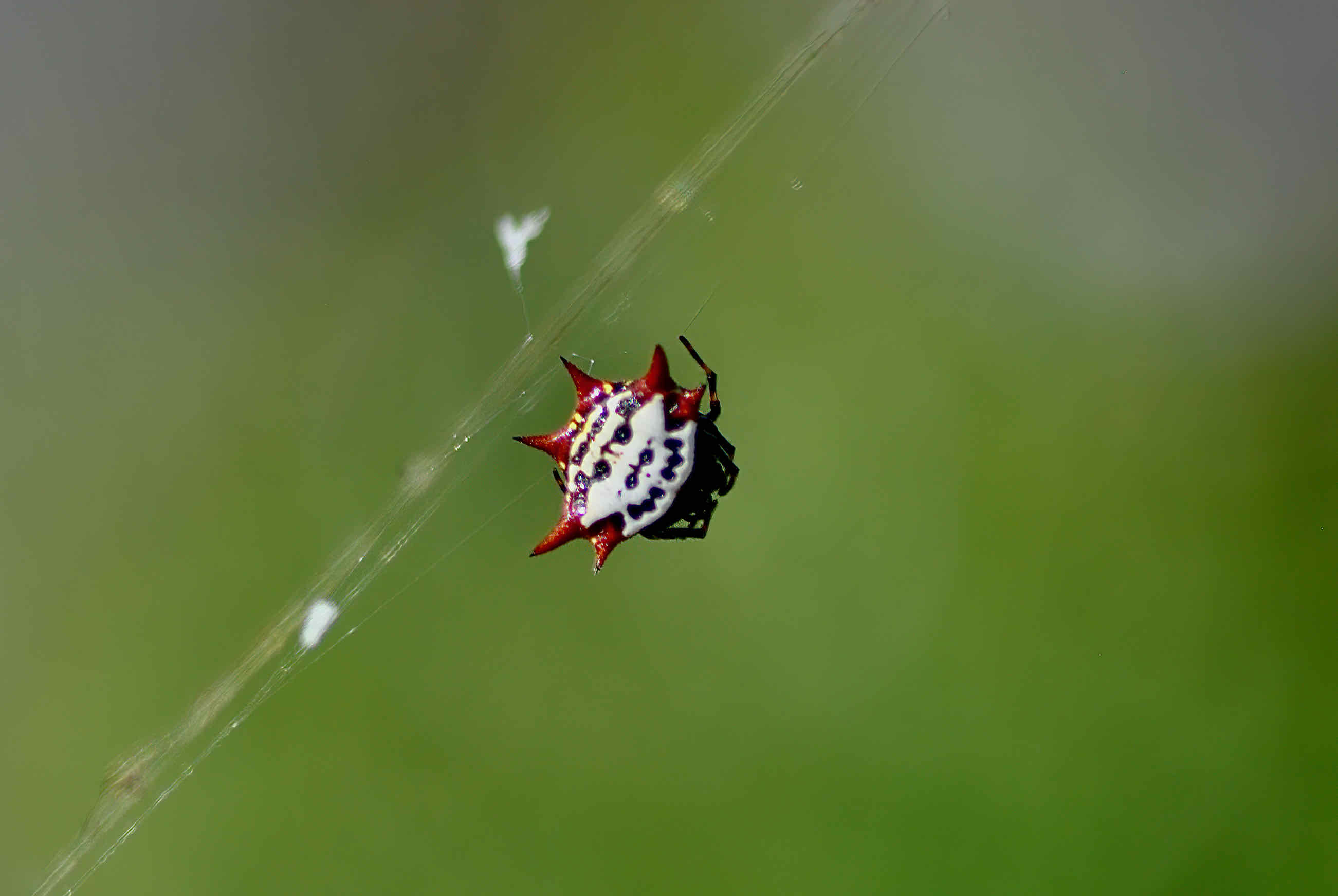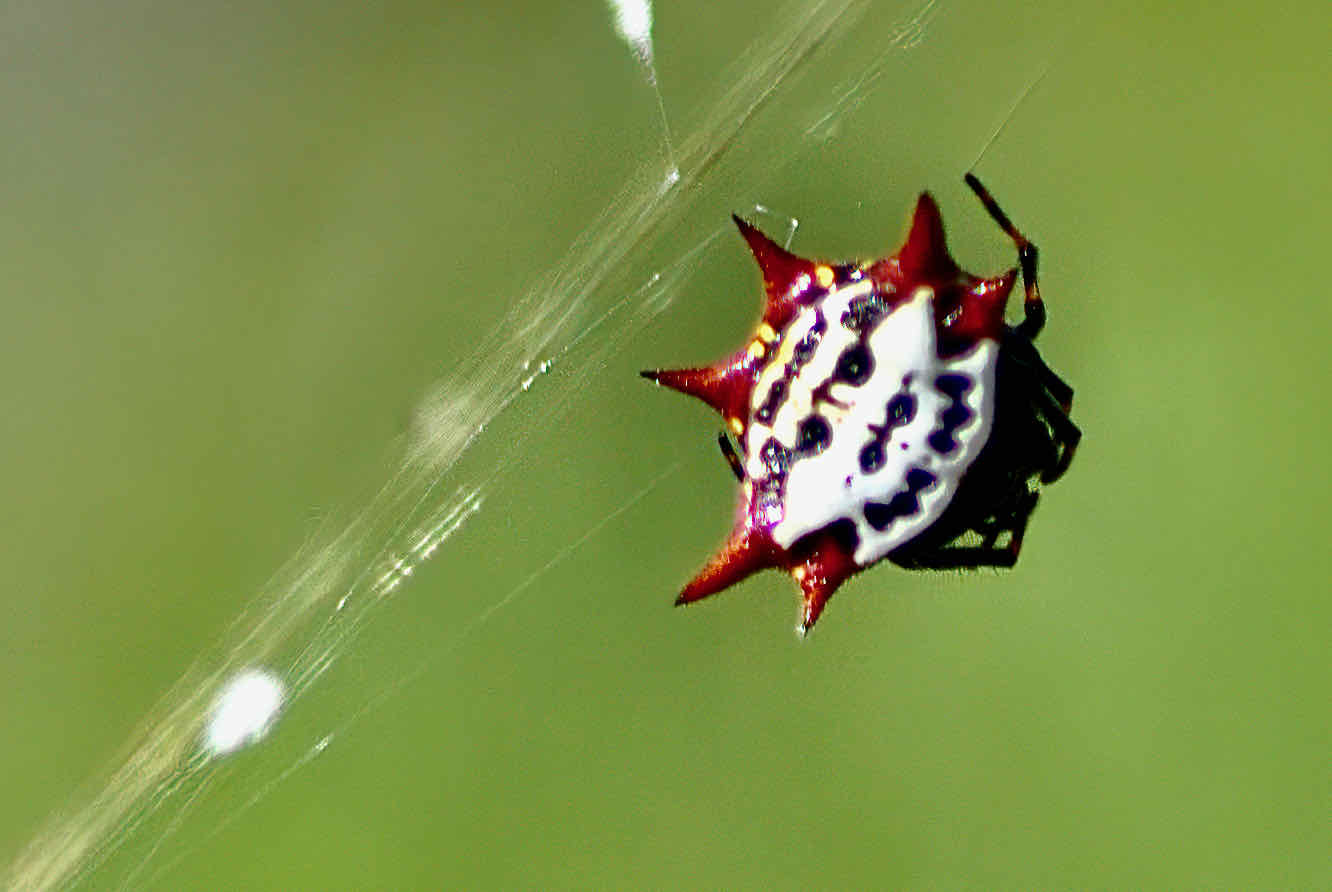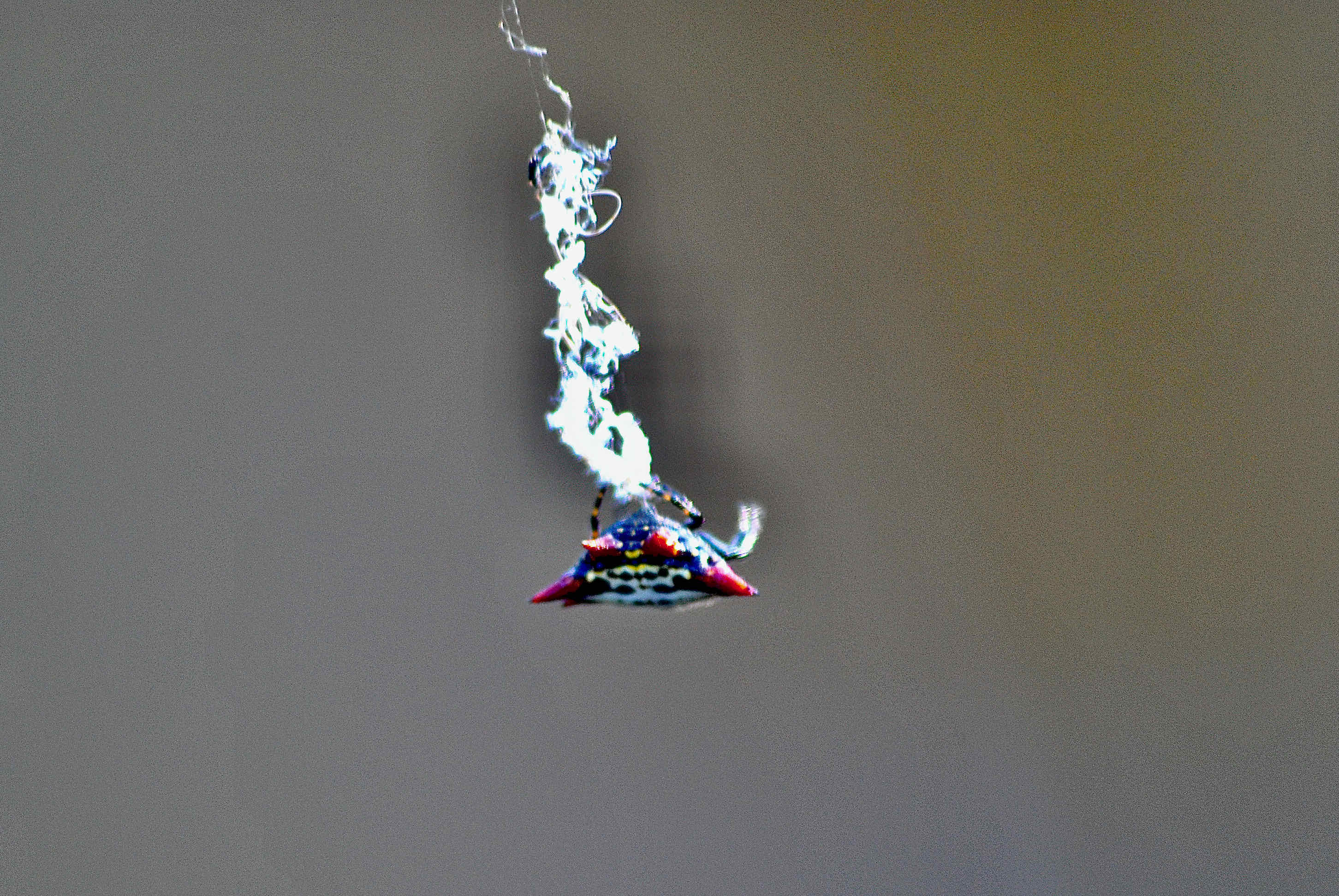
Spiny-orb spider, photographed at MacArthur Beach State Park, North Palm Beach, Palm Beach County, in January 2019.
The spiny orb weaver, Gasteracantha cancriformis, might be the most common and easily identified spider in Florida. Also one of the strangest looking.
It's found throughout Florida and along the southern tier of the United States as far west as California. It's also native to parts of the Caribbean, including Cuba and Jamaica, Mexico, Central America and South America as far south as Argentina.
Spiny orb weavers get their name, of course, from the six sharp, spine-like projections from their abdomen. The genus name, Gasteracantha, is a mash-up of two Greek words: gaster, meaning belly, and acantha, meaning horned. Cancriformis is a reference to its crab-like shape, which gives rise to several other common names. They're called orb weavers because they spin a circular web, as shown in the main photo on this page.
One thing about this spider: the color pattern and even the shape vary greatly depending on where it lives. The red spines, white abdomen and black spots typically is what we see in Florida. But in other regions, the abdomen might be bright yellow, orange or red; the spines might be black. The myriad looks created some confusion for early naturalists, who thought they were looking at difference species instead of regional variations of one, giving each a different scientific name.
Like many spiders, spiny orb weavers are dimorphic, meaning females and males have different looks. Females can be as large as a third of an inch long and a half inch wide. Males are perhaps a third of that. Males share the same color pattern as their female counterparts, but are generally duller in looks. They also lack the spiny projections that mark the females.
It's the female who builds a web and the member of the species we most often encounter. They are harmless to humans; in fact they're considered beneficial for their habit of catching and eating insects we see as pests. Males will attach a thread to the web, where they'll hang out, literally, until it's time to mate. The dinner menu for a spiny orb spider includes flies, white flies, beetles and moths that fly into its web. Yum!
Prey gets tangled in the web, the resulting vibrations from its struggles alerts the resident female, who tries to determine the location of her victim to be. She'll move toward it, secure with silk and bite it, her venom paralyzing the unfortunate bug. Depending on a variety of factors, including size of her prey, she'll either eat it on the spot, encase it in silk or haul it back to the center disc for a snack at another time. Basically, she'll eat the liquified innards, leaving the shell hanging in her web.
Females can be found active throughout the year; males have been found in every month except December and January, but mostly in October and November. Again, guy spiders are hanging on the peripheries of a female's web; when the time is right, he'll vibrate her web in a certain pattern and cautiously approach. If she's receptive, she'll strap him down with silk and they'll mate, perhaps several times, after which he dies. It's not really known whether she'll mate with any of the other males who might be around. In any case, she'll produce an egg sac filled with 100 to 200 eggs and attach it to the underside of a leaf near her nest. Her life's work complete, she dies.
The eggs hatch in less than two weeks, and the young spiny orb weavers are pink and white; after two or three days they molt; after about a week they start picking up some darker colors. Within five weeks and going through various development stages, they're fully mature.
The webs are as large two feet in diameter and as high as 19 feet off the ground. There white tufts woven into the web perhaps as a visual signal for birds and other larger animals to avoid it. There is a tightly woven outer area intended to catch prey and an open central disk where the spider sits, face down. They are diurnal creatures, meaning that they are active during the day.
Spiny orb weavers live on the edges of forests but are commonly found in woody-shrubby urban areas where they can seem to be a bit pesty to us human types walking about. They're also common in citrus groves.
Other names include spinybacked orb weaver, jewel spider, smiley face spider and crab spider (although it technically is not a crab spider). Spiny orb weavers are members of Araneidae, the family of orb weavers.
MacArthur Beach State Park



